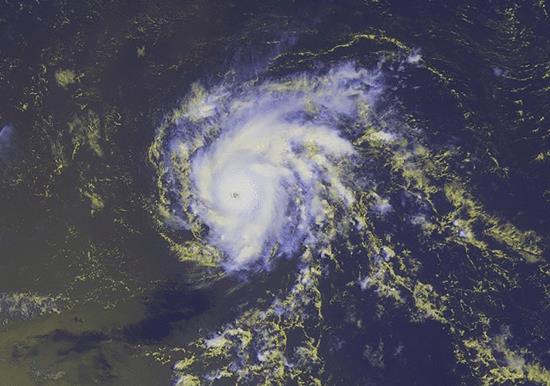
403
Sorry!!
Error! We're sorry, but the page you were looking for doesn't exist.
US- Hurricane Danny strengthens to Category 3, due to weaken
(MENAFN- The Peninsula) Hurricane Danny strengthened to a potentially destructive Category 3 storm yesterday, though it remained relatively small and far from land, according to the US National Hurricane Center.
Winds from Danny, the first hurricane of the 2015 Atlantic season, measured up to 115 miles per hour, government forecasters said.
Danny is expected to weaken back into a tropical storm as it reaches the outer Caribbean islands early next week, before heading towards Puerto Rico and the island of Hispaniola, shared by Haiti and the Dominican Republic, according to the Miami-based hurricane center's five-day outlook.
"Danny remains a tiny hurricane," the center had said earlier on Friday before it was upgraded to a Category 3 on the five-step Saffir-Simpson scale of hurricane wind intensity.
The centre said hurricane-force winds extended only 15 miles (24 km) from the center of the storm.
Danny was about to encounter a less conducive environment of upper winds and dry air, and was forecast to weaken over the next 48 hours, the center said in its latest advisory yesterday morning.
Danny is the fourth named storm of what forecasters have predicted will be a quieter-than-normal 2015 hurricane season, which runs from June 1 through Nov. 30.
The Saffir-Simpson scale measures potential property damage from a storm, with hurricanes reaching Category 3 and higher considered "major" hurricanes with a potential for significant loss of life and damage. A Category 3 storm has winds of between 111 and 129mph.
The government's seasonal forecast has predicted six to 10 named storms this year, with as many as four reaching hurricane status of 74 mph (119 kph), but just one reaching the major category.
Still, forecasters warn that quieter-than-average years in the past have seen some of the most destructive storms in history, such as Hurricane Andrew in 1992, a Category 5 storm with sustained winds above 157mph that devastated south Florida.
Among the factors in this year's predicted weaker hurricane season is the El Niño weather phenomenon, the warming of Pacific waters that affects wind circulation patterns and makes the formation of hurricanes in the Atlantic-Caribbean basin less likely.
The Climate Prediction Center, a National Weather Service agency, last week raised the likelihood to 85 percent that El Niño conditions would last into early spring in the Northern Hemisphere.
Winds from Danny, the first hurricane of the 2015 Atlantic season, measured up to 115 miles per hour, government forecasters said.
Danny is expected to weaken back into a tropical storm as it reaches the outer Caribbean islands early next week, before heading towards Puerto Rico and the island of Hispaniola, shared by Haiti and the Dominican Republic, according to the Miami-based hurricane center's five-day outlook.
"Danny remains a tiny hurricane," the center had said earlier on Friday before it was upgraded to a Category 3 on the five-step Saffir-Simpson scale of hurricane wind intensity.
The centre said hurricane-force winds extended only 15 miles (24 km) from the center of the storm.
Danny was about to encounter a less conducive environment of upper winds and dry air, and was forecast to weaken over the next 48 hours, the center said in its latest advisory yesterday morning.
Danny is the fourth named storm of what forecasters have predicted will be a quieter-than-normal 2015 hurricane season, which runs from June 1 through Nov. 30.
The Saffir-Simpson scale measures potential property damage from a storm, with hurricanes reaching Category 3 and higher considered "major" hurricanes with a potential for significant loss of life and damage. A Category 3 storm has winds of between 111 and 129mph.
The government's seasonal forecast has predicted six to 10 named storms this year, with as many as four reaching hurricane status of 74 mph (119 kph), but just one reaching the major category.
Still, forecasters warn that quieter-than-average years in the past have seen some of the most destructive storms in history, such as Hurricane Andrew in 1992, a Category 5 storm with sustained winds above 157mph that devastated south Florida.
Among the factors in this year's predicted weaker hurricane season is the El Niño weather phenomenon, the warming of Pacific waters that affects wind circulation patterns and makes the formation of hurricanes in the Atlantic-Caribbean basin less likely.
The Climate Prediction Center, a National Weather Service agency, last week raised the likelihood to 85 percent that El Niño conditions would last into early spring in the Northern Hemisphere.

Legal Disclaimer:
MENAFN provides the
information “as is” without warranty of any kind. We do not accept
any responsibility or liability for the accuracy, content, images,
videos, licenses, completeness, legality, or reliability of the information
contained in this article. If you have any complaints or copyright
issues related to this article, kindly contact the provider above.


















Comments
No comment